Don Perlin: An Appreciation
Don Perlin: An Appreciation
By Brian Cunningham
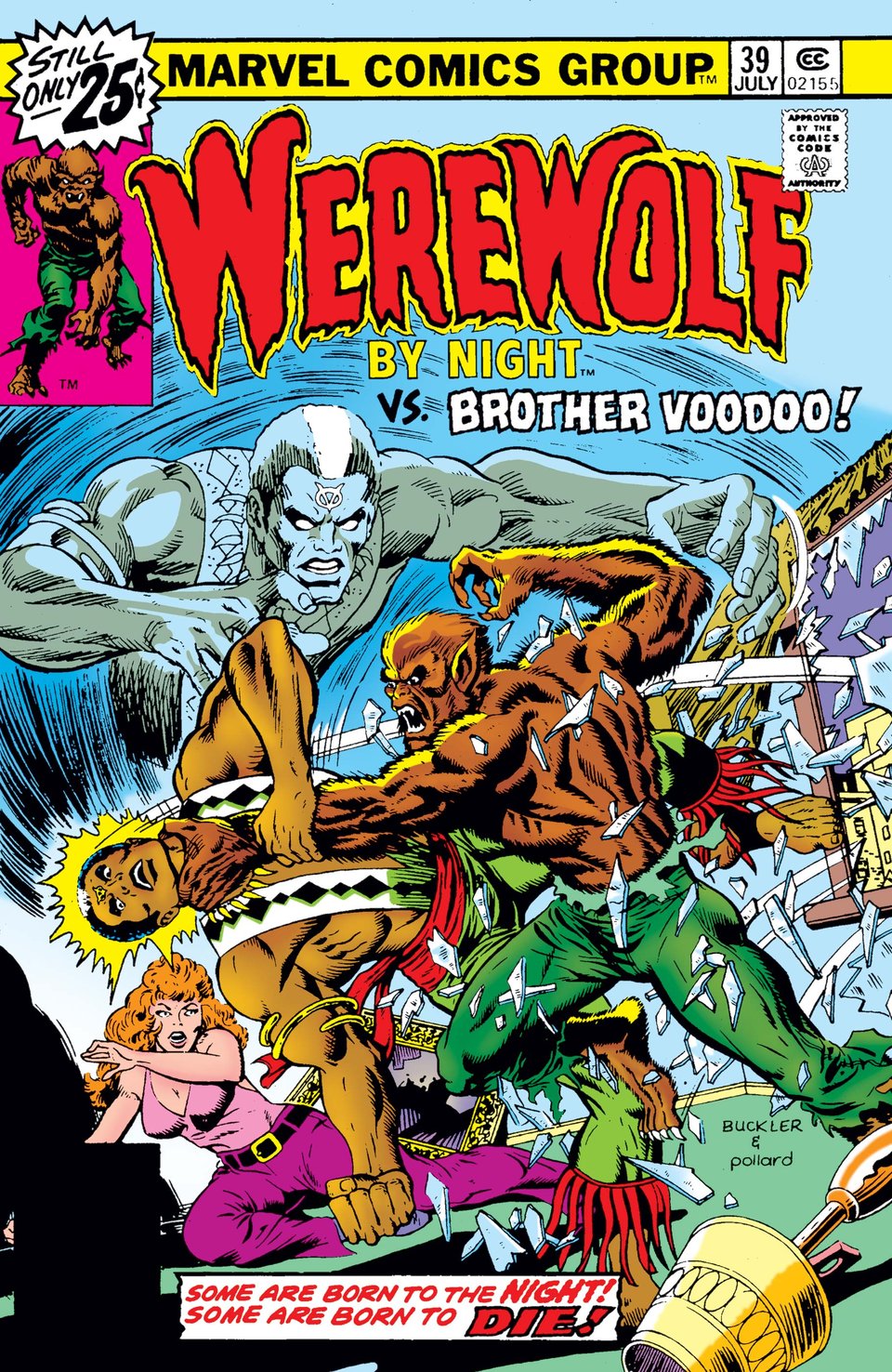
All art ™ & © Marvel Entertainment unless otherwise noted
I never received a formal invitation to the world of comics, but Don Perlin lifted the velvet rope for me with his work. And once I was in, I never left.
Now 94 years young, Perlin has often been praised for his ultra-clear storytelling. The work itself wasn’t ostentatious in a “look at me!” way, it just told the story really well. A "meat and potatoes" approach. The worlds Perlin conjured were completely immersive.
Although I didn’t know it at the time, I was introduced to Perlin’s work in the spring of 1976 when my mom bought me Werewolf by Night #39. I was five years old and already a huge fan of Universal’s Wolf-Man, so a werewolf comic book was right up my alley. That one comic took a beating, surviving a big move shortly thereafter…but not by much. The cover fell off and then was lost to the ages.
All these years later, this one panel from the comic stayed with me:

In hindsight, I get exactly why: these small figures encircled and backlit by a giant moon, bats flying overhead, framed by jungle roots and branches to create an immediate sense of depth. Perlin’s storytelling choices have such graceful power.
Fast-forward six years later. A friend in elementary school religiously read Marvel’s Ghost Rider. Couldn’t stop raving about it. One day I found myself at the local newsstand and saw the latest issue of Ghost Rider — issue #71 — and figured I’d give it a try. I mean, how could I say no to a flaming skull guy on a fiery chopper motorcycle?
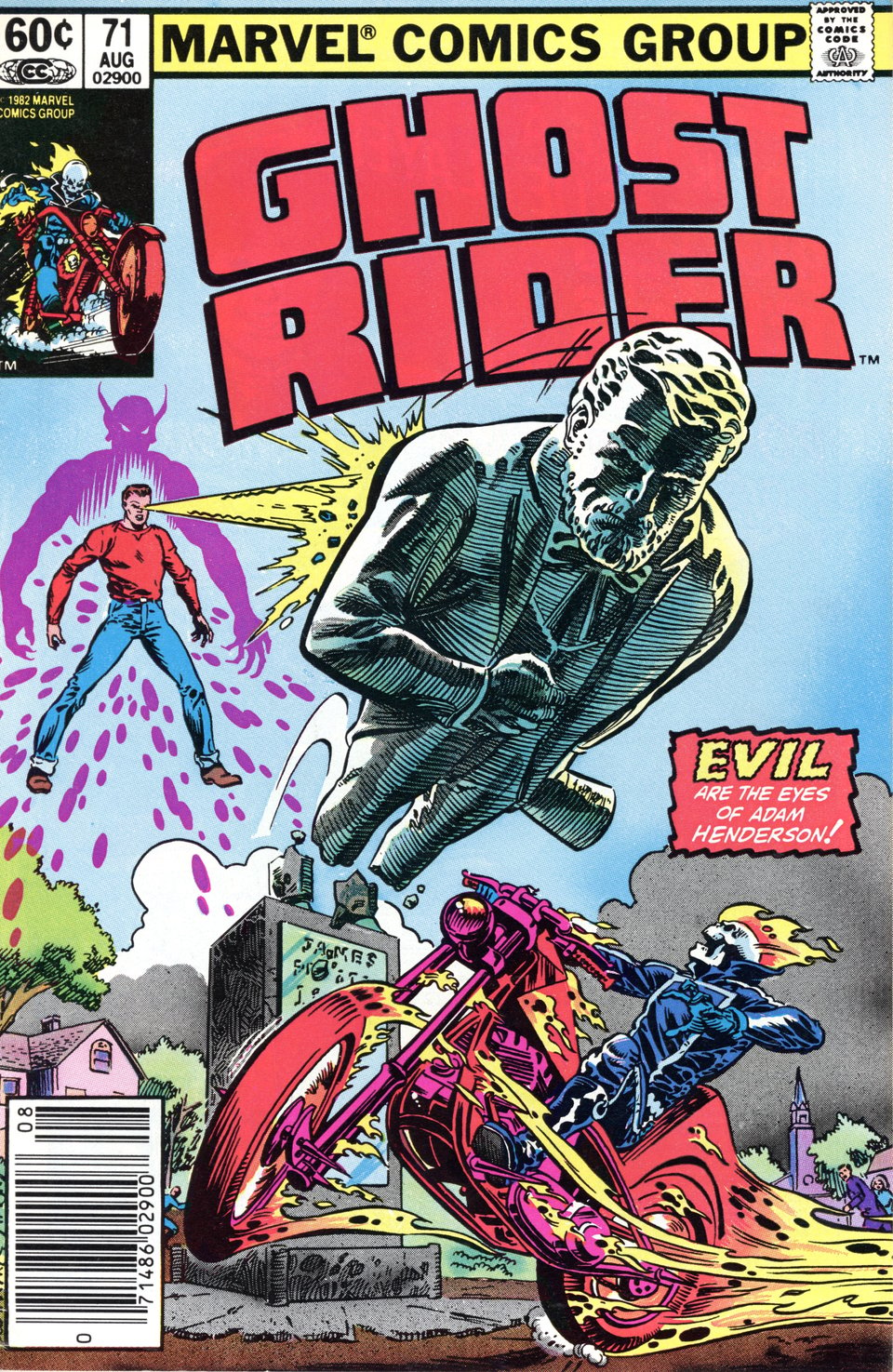
This single act changed the entire trajectory of my life. I never looked back, reading and collecting comics every month ever since, not to mention working in the business professionally now for over 30 years. And a lot of it had to do with the artwork inside that crucial comic by, yes, Don Perlin. He did breakdowns that told the story crystal clearly, aided by the late, great Danny Bulanadi, who did finishing inks.
The opening pages, as seen through the wonder of an 11-year-old's eyes, set up the story: Adam Henderson, on the verge of turning 30, is having an early onset midlife crisis. He wants more out of life. Unluckily for him, he’s about to get more than he bargained for…
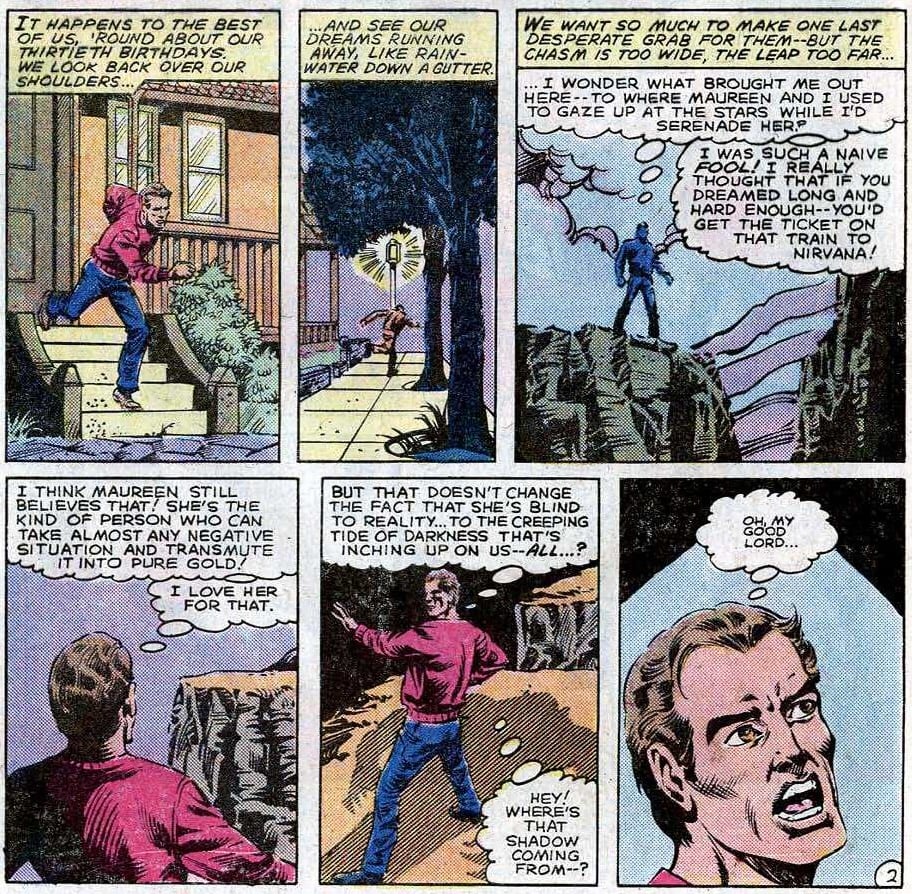
Then we get introduced to our hero, Johnny Blaze, a stunt motorcyclist for the Quentin Carnival. The flaming skull of Ghost Rider looms overhead, eye sockets smoldering.
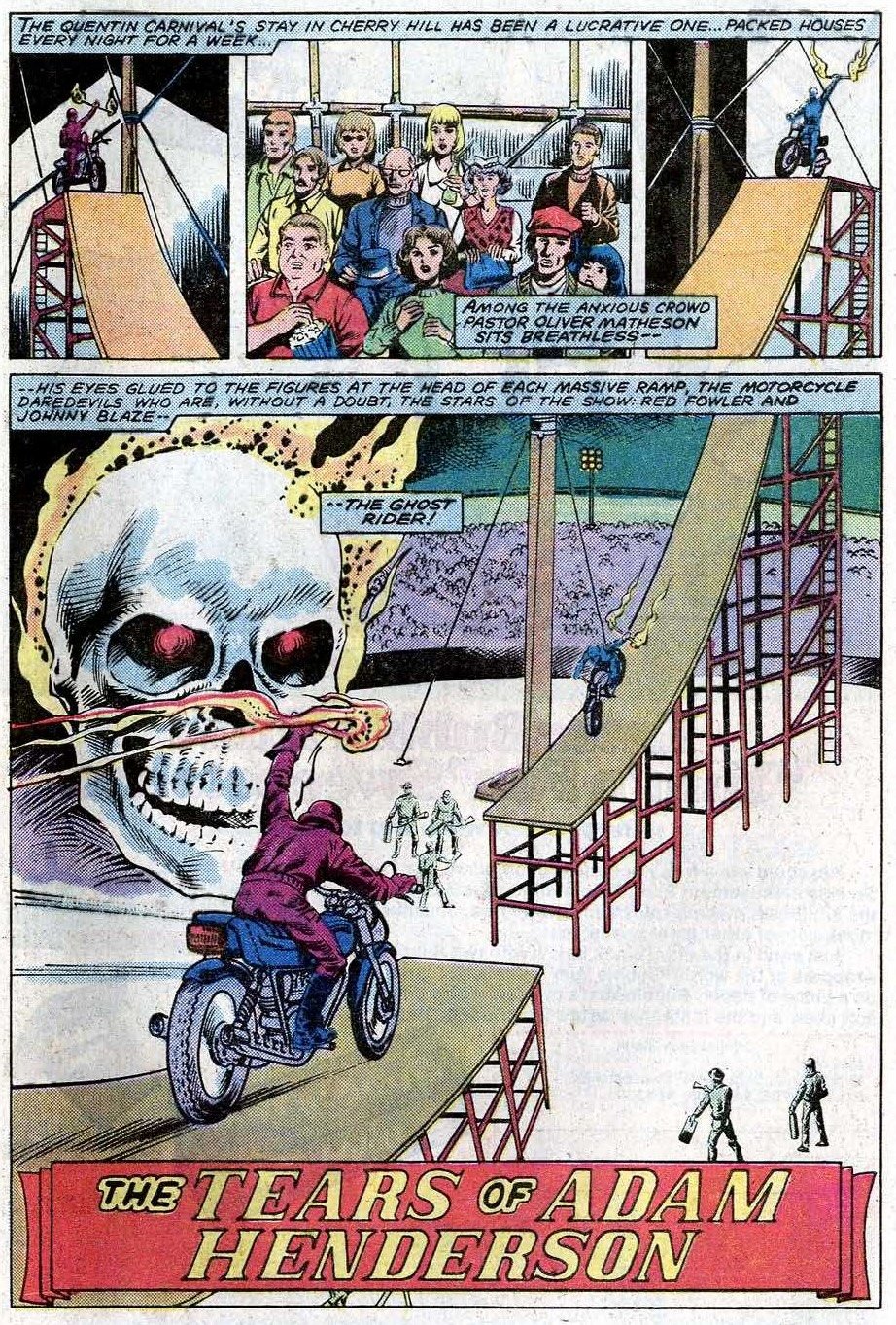
And Johnny’s very good at bringing the crowd to its feet, alongside his cohort Red Fowler. Capturing the illusion of motion — especially with moving vehicles — is really challenging to do well in the two-dimensional static snapshots of comics. Perlin chose the simplest, most direct way to show the stunt.
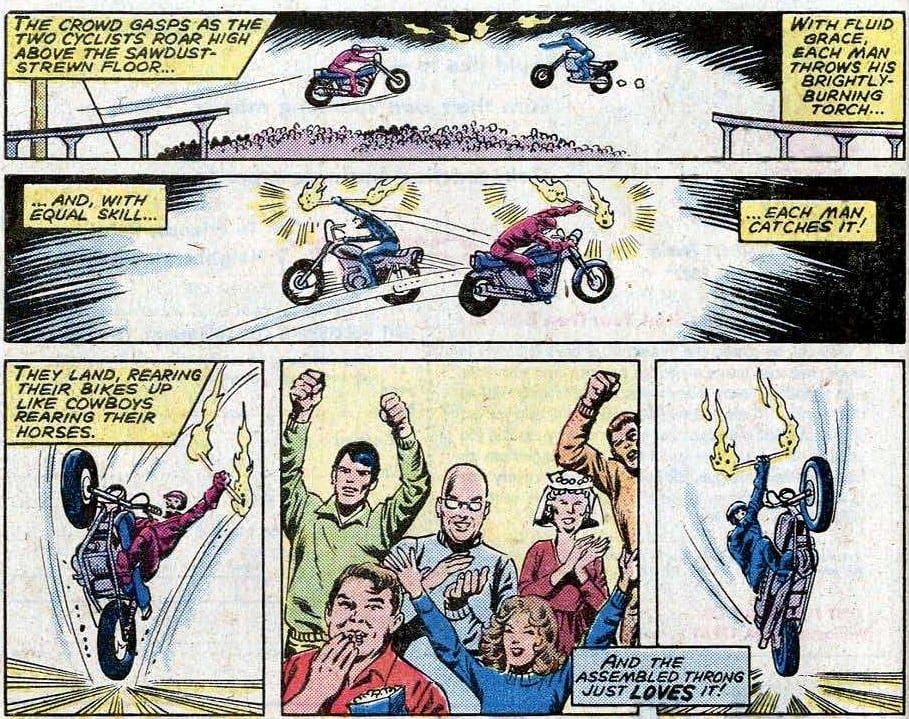
One of Perlin’s storytelling go-tos was the narrow close-up panels that progressively get closer on the face. It’s really effective in expressing that emotional build-up when Adam, becoming progressively more evil, kills an aggressive dog:

We soon discover Adam is possessed by Null, the Living Darkness!
The script by J.M. DeMatteis sparked my imagination, too, opening up my eyes to shared-universe storytelling by referring to his own work on The Defenders, where Null had last appeared. It blew my mind how everything was connected in Marvel's larger story tapestry, something I had never really thought about. And it worked as a sales tool: I wasn’t very familiar with these Defenders shown, so of course I had to seek out that series next time I had 60 cents to spare!
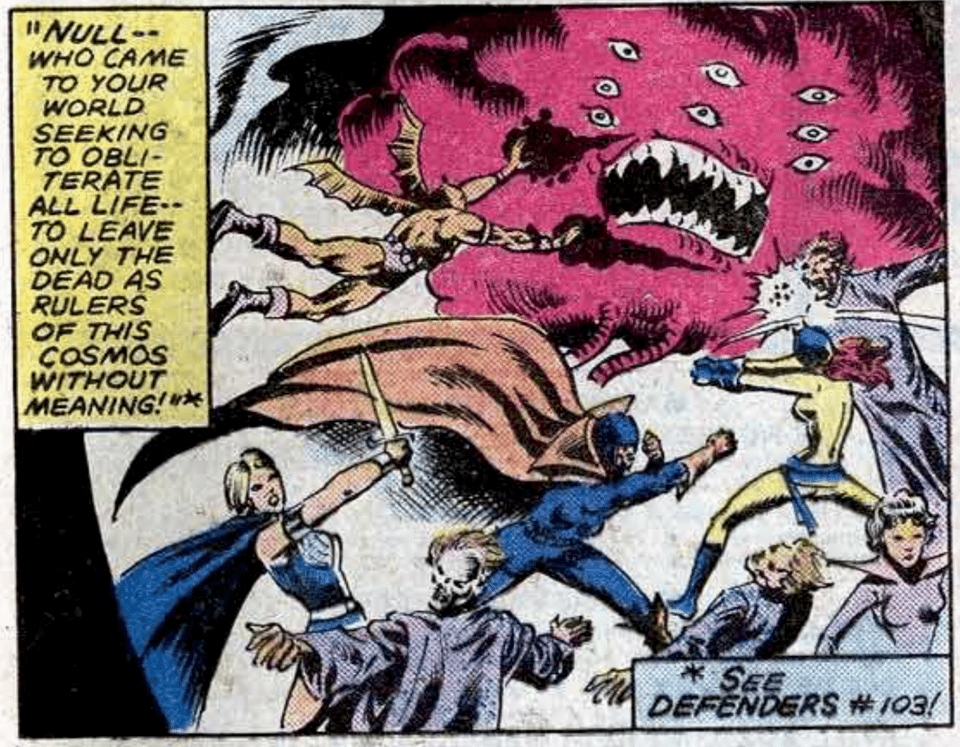
Back to Null: the poor guy pours his heart out and cries tears of…black goop? I didn’t know then that black ink was used to imply blood in the Comics Code era. Either way, it was a creepy visual.
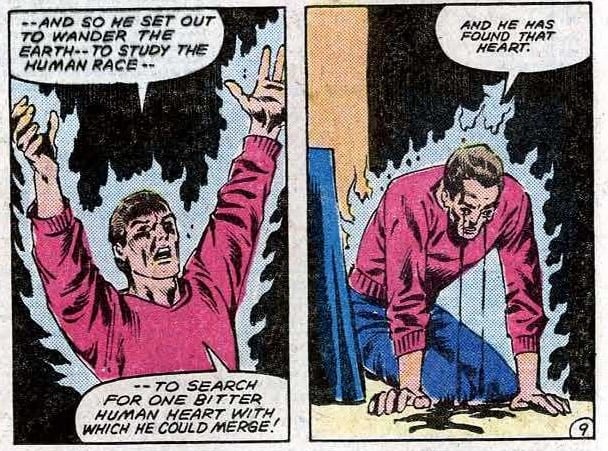
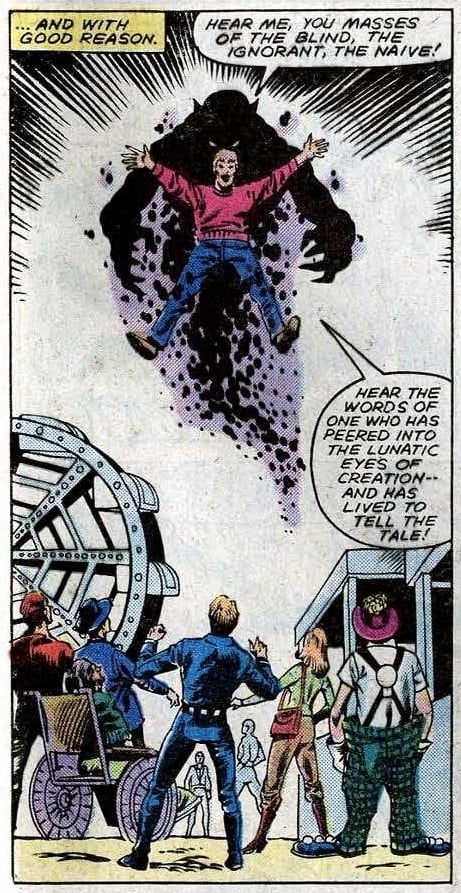
Perlin also liked to do what's called a polyptych — i.e., a panoramic environment broken up into smaller panels — to give the illusion of movement. Johnny’s transformation into Ghost Rider looked super cool to me, along with the fiery creation of his chopper.
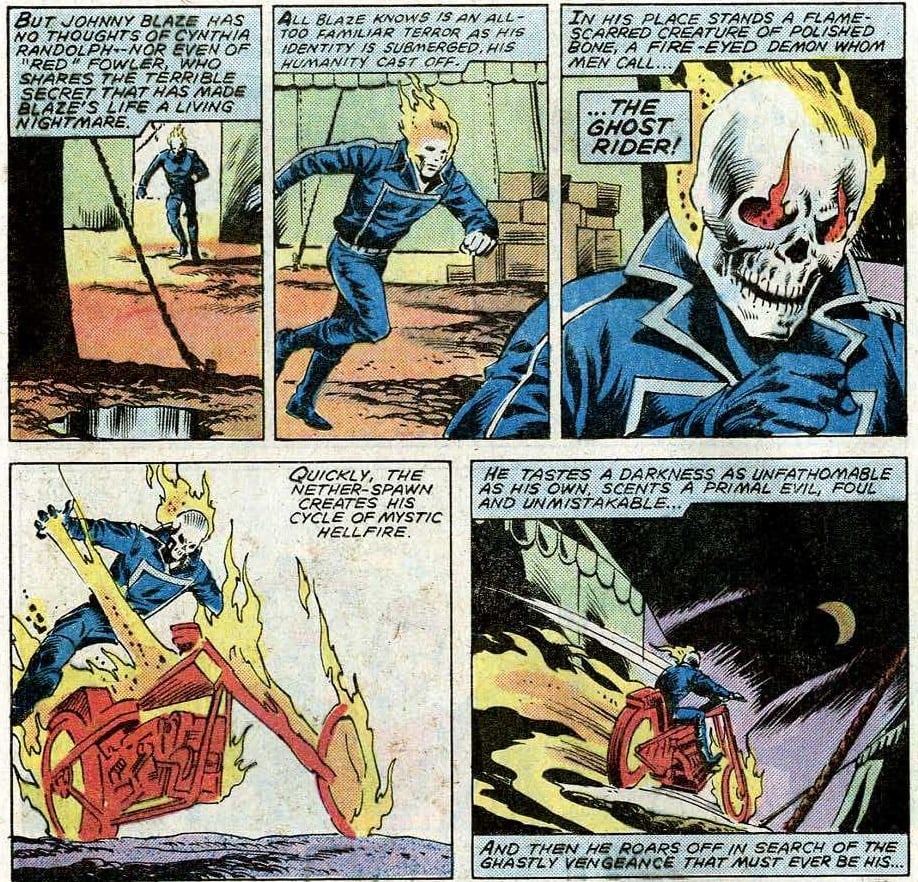
If I weren't already convinced of Perlin's skill, this one spectacular panel would have sealed the deal:
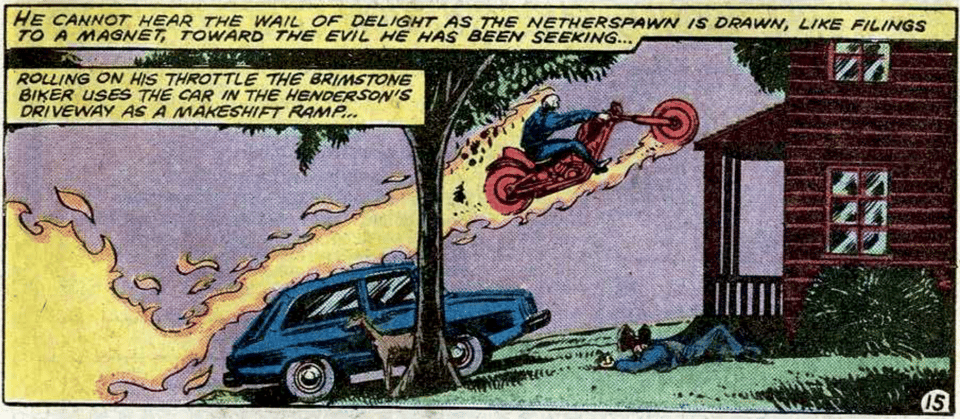
And the fight ensues! I found it hilariously unexpected when Adam/Null shrunk our fiery hero into a raging Itty Bitty Ghost Rider.
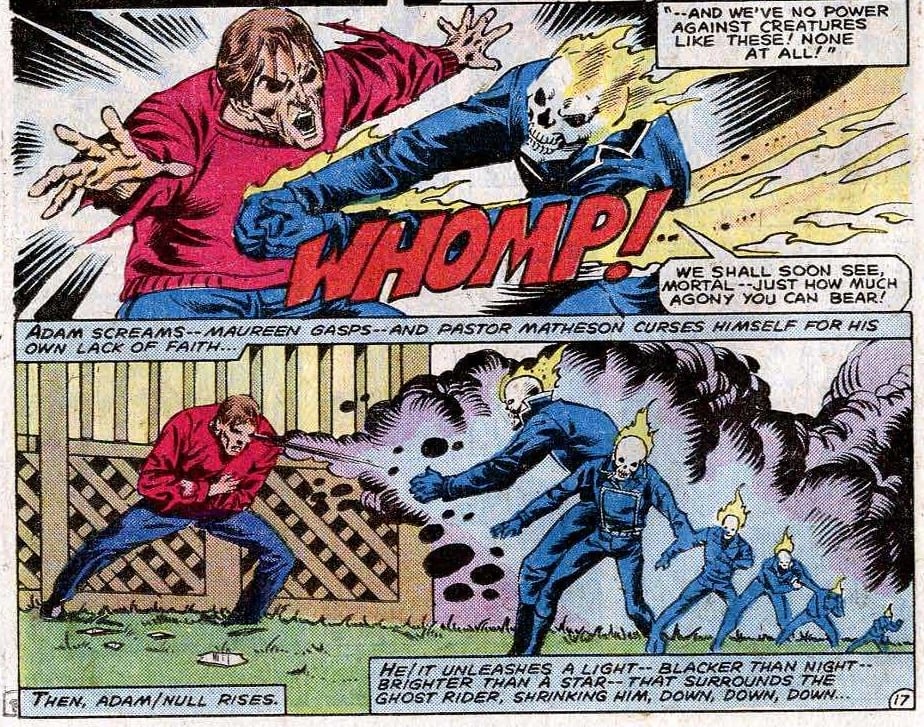
And it ends with mixed emotions. Sure, Johnny stopped Null, but he must still carry the burden of demonic possession. I felt the tragedy of this character in a way I hadn’t considered before this moment. Johnny’s gesture in that last panel, as drawn by Perlin, drove it home: Johnny Blaze gets no happy ending, and it resonated with younger me. Still does.
There was no way in hellfire that I wasn’t coming back for more of this.
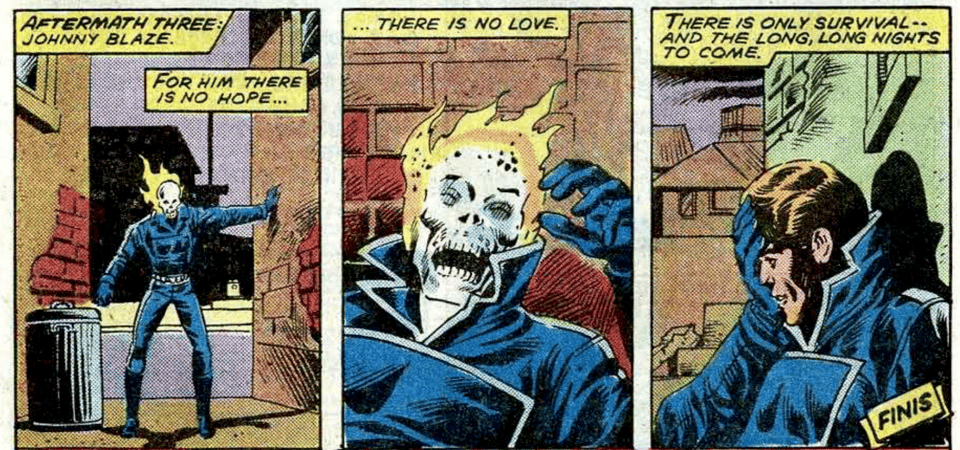
As time went on, I followed Perlin’s work on Defenders and then New Defenders. In the late ’80s, he transitioned to be a Marvel art director mentoring young Bullpen artists. His crew, “Perlin’s Pirates,” was a counterpart of John Romita’s “Raiders.”
Then, to my delight, he penciled several of Valiant’s early efforts in the 1990s, most memorably with the launch of Solar, Man of the Atom. I absolutely loved writer Jim Shooter’s heady quantum physics time travel storytelling, made simple and accessible by Perlin’s visual choices. Perlin also helped launch Valiant's huge selling Bloodshot series (1993), which spawned the Vin Diesel movie in March 2020.
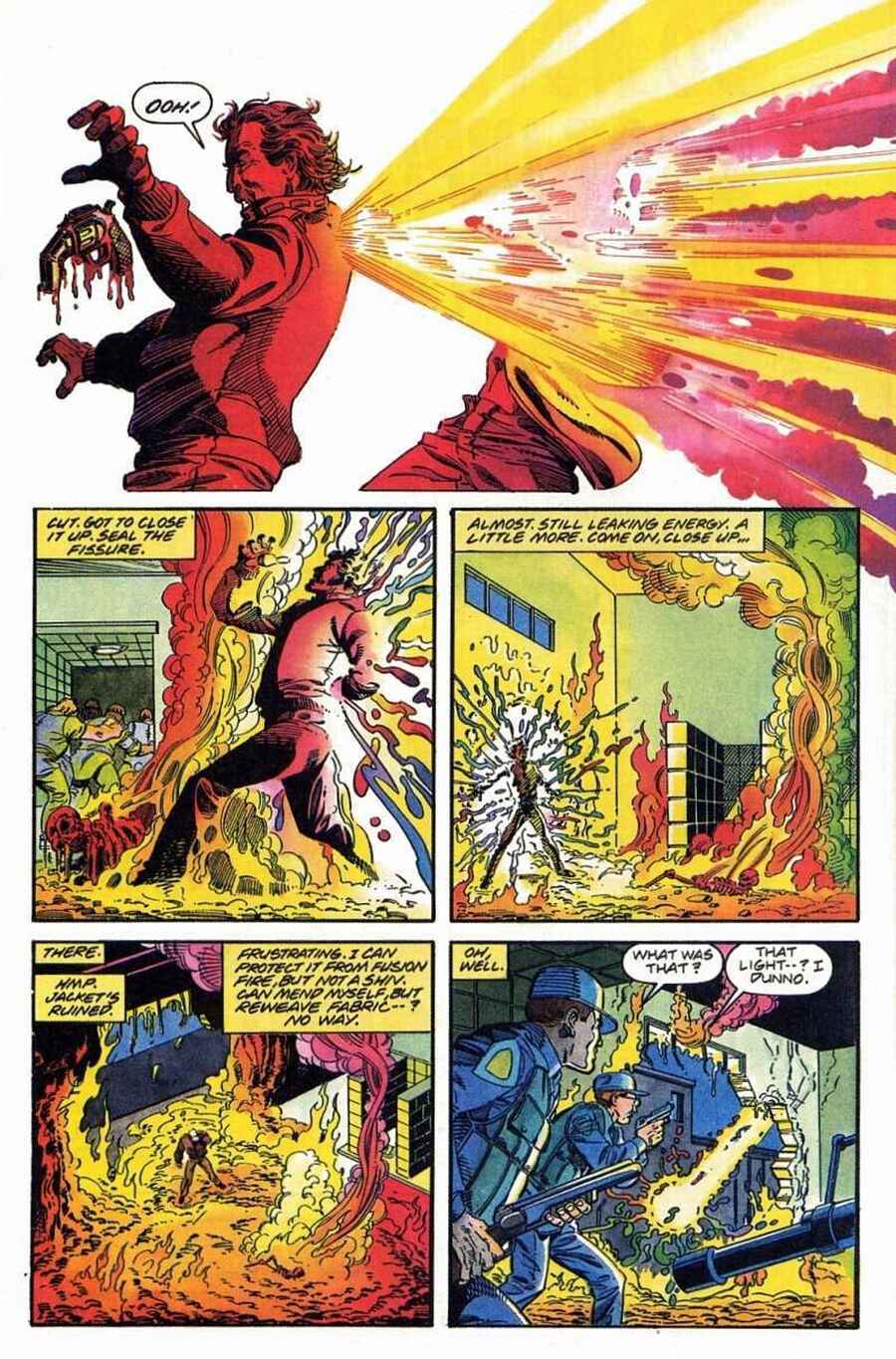
In his art career, Perlin seemingly did it all — penciling, inking, editing, art directing and mentoring. It’s not surprising that Perlin — a U.S. Army veteran — was the ultimate team player, doing his job well and never calling attention to himself.
All this to say: Thank you, Don Perlin. If not for you, I wouldn’t have started this lifelong journey in comics. It’s a debt I can never truly repay.
Thank you for reading Studio K7. If you think someone else would like this post, feel free to share it.
Subscribe for free to receive new posts and support our work.
Check out Studio K7's merch on Etsy! https://studiokseven.etsy.com